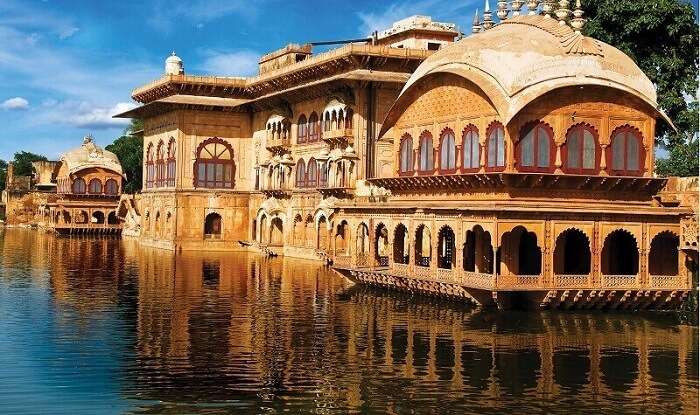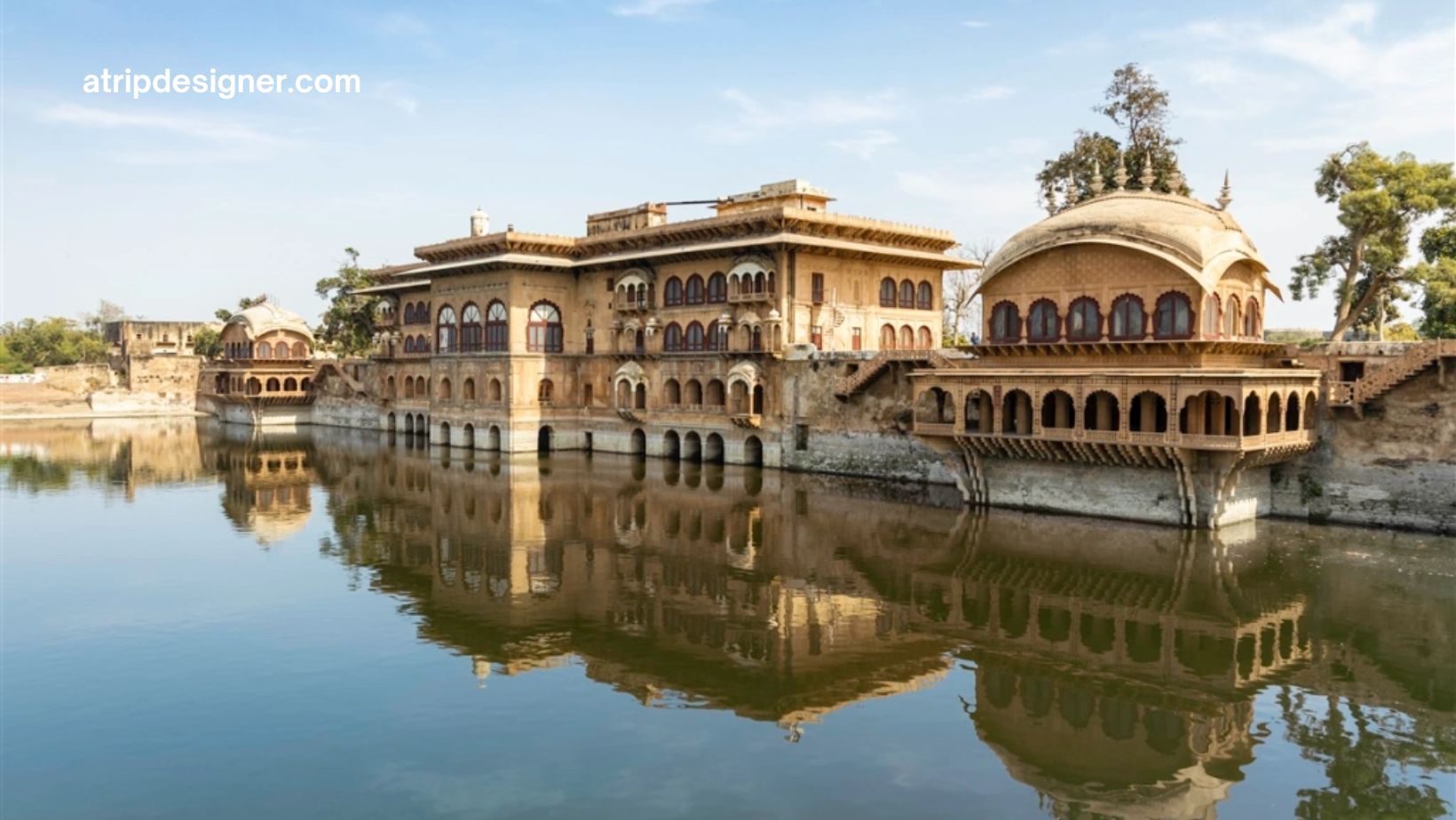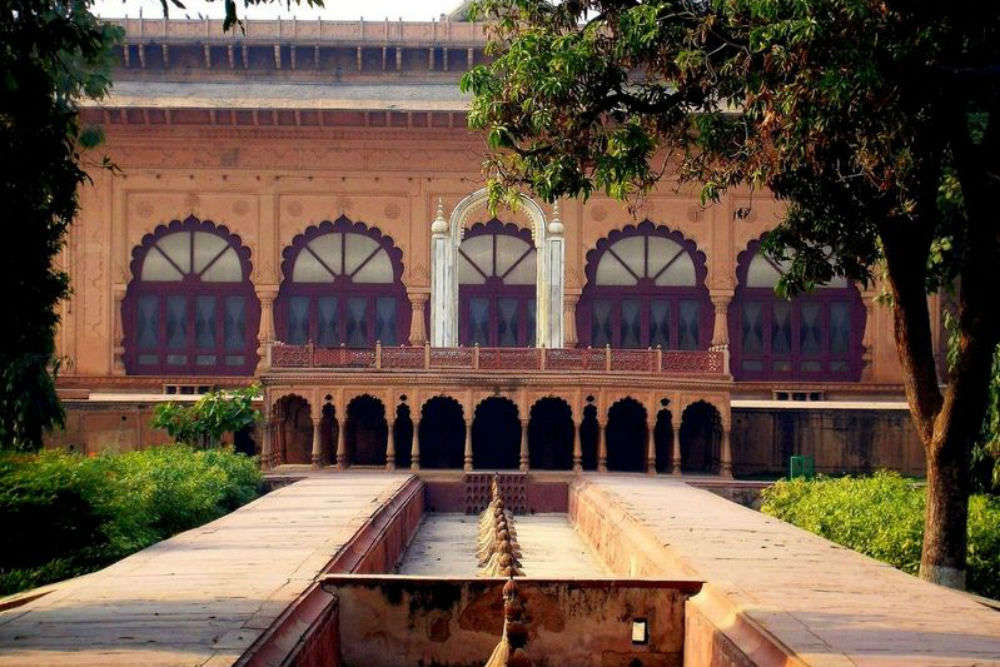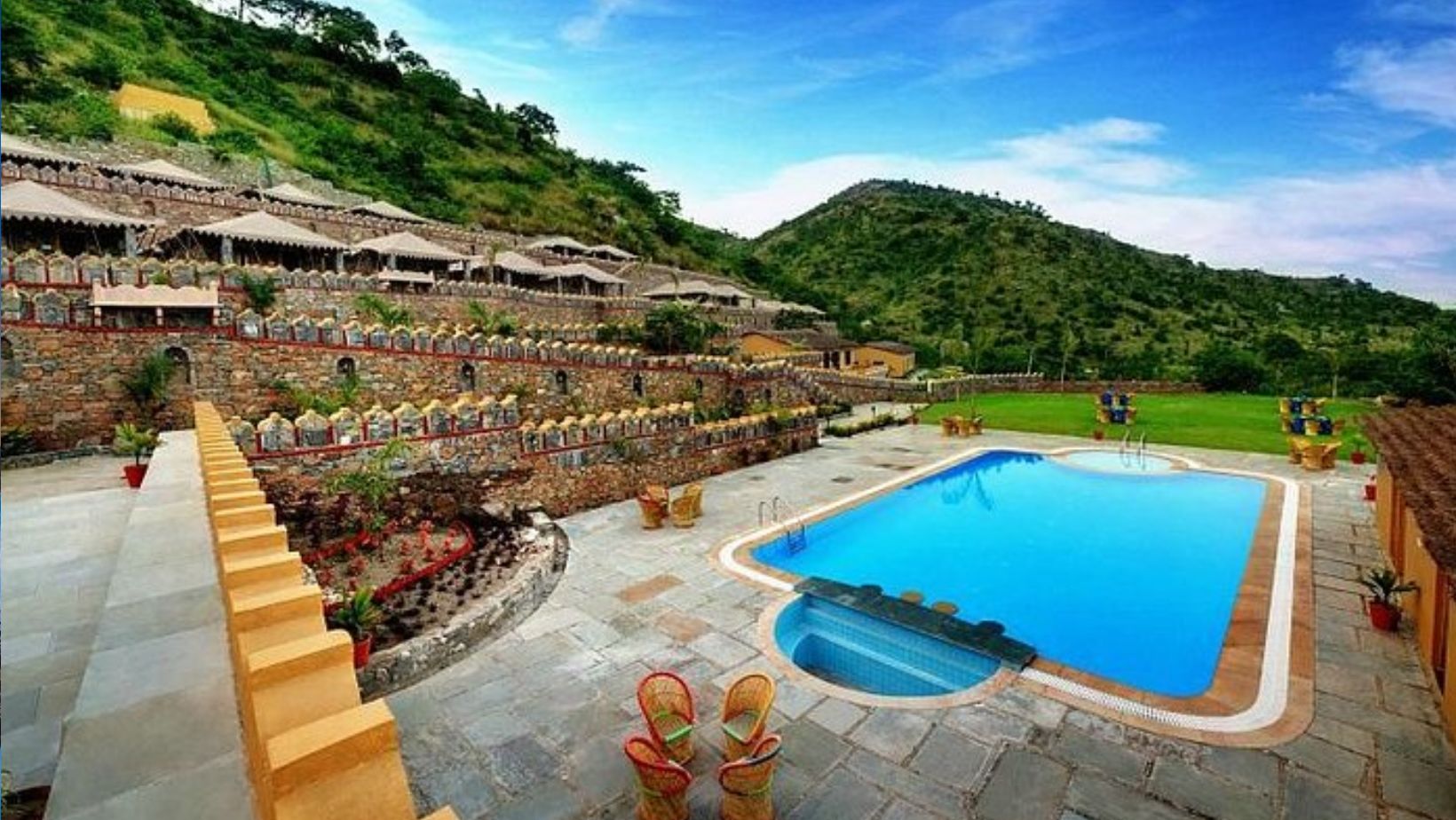Nestled in the heart of Rajasthan, the Deeg Jal Mahal stands as a testament to the rich cultural heritage and architectural brilliance of India. This enchanting palace, often overshadowed by its more famous counterparts in Jaipur and Udaipur, beckons history enthusiasts and wanderers alike to uncover its mysteries. In this journey, we’ll delve deep into the history, architecture, and the captivating allure of the Deeg Jal Mahal.
A Glimpse into Deeg Jal Mahal’s History
The Water Palace, known as Deeg Jal Mahal, is a concealed treasure nestled within the town of Deeg, situated approximately 150 kilometers away from Jaipur. Its origins trace back to the 18th century when it was meticulously erected under the patronage of Maharaja Suraj Mal, the illustrious ruler of Bharatpur. Amidst the common perception of Rajasthan’s arid terrains, this palace stands as a breathtaking juxtaposition, enveloped by verdant gardens and enchanting cascades.
 Also read – Explore Sajjangarh Palace in Udaipur and Uncover Its Enchanting History
Also read – Explore Sajjangarh Palace in Udaipur and Uncover Its Enchanting History
The Maharaja designed the Deeg Jal Mahal as a summer resort, and it served as a cool retreat during the scorching summers of Rajasthan. The palace’s strategic location near an artificial lake allowed for natural cooling, making it a resplendent oasis amidst the desert.
Architectural Marvel: A Blend of Styles
One of the most intriguing aspects of the Deeg Jal Mahal is its architectural style, which blends elements of Rajput and Mughal architecture. The palace’s facade boasts intricate carvings and delicate jharokhas (overhanging balconies) that are quintessentially Rajput. Simultaneously, its symmetrical layout and the presence of chhatris (domed pavilions) are reminiscent of Mughal influence.
The palace stands as a tribute to the brilliant ingenuity of its architects, skillfully blending these two unique styles to craft a harmonious and visually captivating edifice. While venturing through its halls and open spaces, you’ll find yourself deeply impressed by the meticulous craftsmanship and the incorporation of vibrant hues that grace its inner spaces.
Also read – Explore The Six Beautifull Hill Forts of Rajasthan
The Enigmatic Waterworks
The Deeg Jal Mahal derives its name, “Water Palace,” from the elaborate system of waterworks that grace its premises. The palace is adorned with numerous fountains, cascades, and shimmering pools that once danced to the rhythms of water. The ingenious hydraulic system, powered by gravity, was an engineering marvel of its time.
Visitors to the Deeg Jal Mahal can witness the intricate waterworks during special events when the fountains are brought back to life. The mesmerizing display of water and light evokes a sense of wonder and transports you to a bygone era.
Deeg Jal Mahal: A Historical Canvas
Apart from its architectural splendor, the Deeg Jal Mahal also holds historical significance. It served as a backdrop for important political and diplomatic meetings during the 18th century. It was in these opulent chambers that Maharaja Suraj Mal hosted discussions and negotiations with various rulers and emissaries, solidifying alliances and shaping the course of history.
Also read – Exploring Taragarh Fort in Bundi: A Journey Through History
Additionally, the palace witnessed the legendary Battle of Deeg in 1804 when it became a battleground during the Second Anglo-Maratha War. The scars of the battle still remain, adding to the intrigue and historical depth of the Deeg Jal Mahal.
The Mysterious Chambers and Gardens
Exploring the Deeg Jal Mahal is like unraveling a treasure trove of hidden chambers and lush gardens. The palace features a series of rooms and halls adorned with stunning frescoes, reflecting the artistic finesse of the time. The Sheesh Mahal, or the Hall of Mirrors, is a captivating chamber embellished with intricate mirror work that shimmers like a starlit sky.
The palace gardens, known as the Deeg Bagh, are a verdant paradise. They house a remarkable collection of fountains, kiosks, and pavilions that are reminiscent of Mughal charbaghs. The gardens’ layout is a symphony of geometrical patterns, and they come alive with vibrant blossoms during the spring season, making it an ideal spot for a leisurely stroll.
Also read – Explore Bidar Fort: Unraveling the Rich Tapestry of History
Visiting Deeg Jal Mahal Today
In the past few years, dedicated endeavors have been undertaken to rejuvenate and safeguard the Deeg Jal Mahal, affording visitors the chance to bask in its complete splendor. Presently, the palace welcomes the public, and embarking on a visit is akin to stepping back in history to a period characterized by lavishness and refinement.
While you wander through the Deeg Jal Mahal, don’t rush; instead, savor the extraordinary architectural wonders, wander leisurely through the charming gardens, and let your imagination transport you to the palace’s prime days. Witnessing the resplendent waterworks during special events is an experience that should not be missed.
Conclusion: A Hidden Jewel Beckons
The Deeg Jal Mahal, with its rich history, architectural brilliance, and enchanting gardens, is a testament to India’s cultural heritage. It stands as an emblematic representation of the harmonious blend of Rajput and Mughal aesthetics, serving as a poignant reminder of a bygone epoch.
So, the next time you plan a trip to Rajasthan, make sure to venture off the beaten path and explore the Deeg Jal Mahal. It’s a journey that promises not only historical insights but also a serene escape into the beauty of this hidden gem in the desert state of India.
Also read – Blue Lake Lucerne, Switzerland: A Beautiful Destination For Travelers












